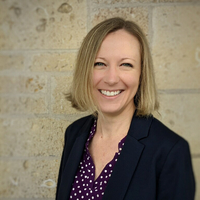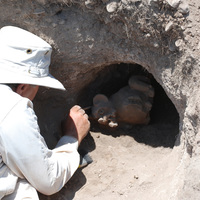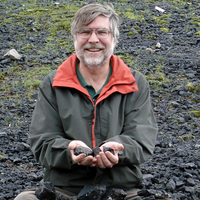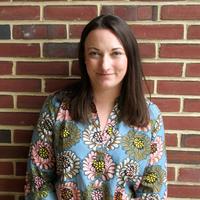
Ronald "Sonny" Faulseit
I am an Associate Professor of Anthropology at Pierce College in Los Angeles, specializing in the archaeology of the Oaxaca Valley of Mexico. My research focus involves studying the articulation and restructuring of political and social boundaries as well as how these processes relate to resilience in the wake of political fragmentation.
I am directing a long-term project of mapping and excavation at the site of Dainzú-Macuilxóchitl (DM), which was an important secondary center under the Monte Albán polity during the Classic period (A.D. 200 - 900). After the fragmentation of the centralized authority, DM played a role in the Early Postclassic (A.D. 900 -1300) sociopolitical reorganization of the valley, emerging as a prominent kingdom in the Late Postlcassic (A.D. 1300 - 1521). The project focuses on examining diachronic patterns in ritual and economic behavior, as well as abandonment patterns at the site.
Outside of this particular research focus, I also have an interest in Archaeoastronomy, especially in Mesoamerica. I maintain a very skeptical disposition, however, about how such research is often carried out and how conclusions are drawn. Following the model of Anthony Aveni or Ivan Sprajc, I prefer to propose hypotheses not only based on physical alignments, but also on the cultural significance of such alignments.
Supervisors: Dan Healan and Gary Feinman
Address: 1400 S Lake Shore Drive
Integrative Research Center
The Field Museum
I am directing a long-term project of mapping and excavation at the site of Dainzú-Macuilxóchitl (DM), which was an important secondary center under the Monte Albán polity during the Classic period (A.D. 200 - 900). After the fragmentation of the centralized authority, DM played a role in the Early Postclassic (A.D. 900 -1300) sociopolitical reorganization of the valley, emerging as a prominent kingdom in the Late Postlcassic (A.D. 1300 - 1521). The project focuses on examining diachronic patterns in ritual and economic behavior, as well as abandonment patterns at the site.
Outside of this particular research focus, I also have an interest in Archaeoastronomy, especially in Mesoamerica. I maintain a very skeptical disposition, however, about how such research is often carried out and how conclusions are drawn. Following the model of Anthony Aveni or Ivan Sprajc, I prefer to propose hypotheses not only based on physical alignments, but also on the cultural significance of such alignments.
Supervisors: Dan Healan and Gary Feinman
Address: 1400 S Lake Shore Drive
Integrative Research Center
The Field Museum
less
Related Authors
Amy Thompson
The University of Texas at Austin
Keith Prufer
University of New Mexico
Gary Feinman
Field Museum
Els Barnard
Rheinische Friedrich-Wilhelms-Universität Bonn
Barry Kidder
University of Kentucky
Michael E Smith
Arizona State University
Claire Ebert
University of Pittsburgh
Anabel Ford
University of California, Santa Barbara
Joshua T Schnell
University of Pittsburgh
InterestsView All (32)










Uploads
Books by Ronald "Sonny" Faulseit
In March 2013, an international conference held at Southern Illinois University in Carbondale brought together scholars with diverse theoretical perspectives to present and synthesize new data and approaches to understanding the collapse and reorganization of complex societies. No restrictions were imposed regarding chronological periods, geographical regions or material specialties, resulting in a wide-ranging potential for comparative analysis. This publication is the outcome of that meeting. It is not organized merely as a collection of diverse case studies, but rather a collaborative effort incorporating various data sets to evaluate and expand on theoretical approaches to this important subject. The works contained within this volume are organized into five sections: the first sets the stage with introductory papers by the editor and distinguished contributor, Joseph Tainter; the second contains works by distinguished scholars approaching collapse and reorganization from new theoretical perspectives; the third presents critical archaeological analyses of the effectiveness of Resilience Theory as a heuristic tool for modeling these phenomena; the fourth section presents long-term adaptive strategies employed by prehistoric societies to cope with stresses and avoid collapse; the final section highlights new research on post-decline contexts in a variety of temporal and geographic ranges and relates these data to the more comprehensive works on the subject.
Papers by Ronald "Sonny" Faulseit
archaeological sites. The ability to determine the geological source for each compositionally analyzed piece of obsidian provides a window into prehispanic exchange that is not presently possible for any other abundant archaeological good. Because there are no obsidian outcrops in the state of Oaxaca, the Valley of Oaxaca and surrounding regions are ideal for examining long-distance exchange and shifts in networks over time. Through the use of portable X-ray fluorescence technology we have expanded the corpus of sourced obsidian from the Valley of Oaxaca to over 10,000 pieces that were procured from 13 different sources. Significant changes over time are noted in the abundance of these sources. In addition , site-to-site differences point to contemporaneous variation in obsidian procurement and network participation.
The findings from this analysis do not support a model of centralized
control and redistribution by Monte Alban or any other settlement. Obsidian
assemblages in Oaxaca were affected by extra-regional, geopolitical processes that impacted broader networks of exchange.
associated with the archaeological remains found on their communal lands. Subsequently, the National Institute of Anthropology and History (INAH) has initiated a program for the development of communitarian museums, providing a means for people to present their heritage on their own terms, and therefore, establish the legacy between the modern and ancient communities. In this paper, I discuss the background behind this movement, as wells as my own experience curating the materials from archaeological investigations in the communitarian museum of an indigenous community in Oaxaca. [Zapotec, community museums, Oaxaca, archaeology]
The Copy I posted here is a Spanish translation of the original, which is posted to the FAMSI website. See link
It was published in a special edition of Human Mosaic V.36 that was dedicated to Harvey and Vicky Bricker
Project Reports by Ronald "Sonny" Faulseit
In March 2013, an international conference held at Southern Illinois University in Carbondale brought together scholars with diverse theoretical perspectives to present and synthesize new data and approaches to understanding the collapse and reorganization of complex societies. No restrictions were imposed regarding chronological periods, geographical regions or material specialties, resulting in a wide-ranging potential for comparative analysis. This publication is the outcome of that meeting. It is not organized merely as a collection of diverse case studies, but rather a collaborative effort incorporating various data sets to evaluate and expand on theoretical approaches to this important subject. The works contained within this volume are organized into five sections: the first sets the stage with introductory papers by the editor and distinguished contributor, Joseph Tainter; the second contains works by distinguished scholars approaching collapse and reorganization from new theoretical perspectives; the third presents critical archaeological analyses of the effectiveness of Resilience Theory as a heuristic tool for modeling these phenomena; the fourth section presents long-term adaptive strategies employed by prehistoric societies to cope with stresses and avoid collapse; the final section highlights new research on post-decline contexts in a variety of temporal and geographic ranges and relates these data to the more comprehensive works on the subject.
archaeological sites. The ability to determine the geological source for each compositionally analyzed piece of obsidian provides a window into prehispanic exchange that is not presently possible for any other abundant archaeological good. Because there are no obsidian outcrops in the state of Oaxaca, the Valley of Oaxaca and surrounding regions are ideal for examining long-distance exchange and shifts in networks over time. Through the use of portable X-ray fluorescence technology we have expanded the corpus of sourced obsidian from the Valley of Oaxaca to over 10,000 pieces that were procured from 13 different sources. Significant changes over time are noted in the abundance of these sources. In addition , site-to-site differences point to contemporaneous variation in obsidian procurement and network participation.
The findings from this analysis do not support a model of centralized
control and redistribution by Monte Alban or any other settlement. Obsidian
assemblages in Oaxaca were affected by extra-regional, geopolitical processes that impacted broader networks of exchange.
associated with the archaeological remains found on their communal lands. Subsequently, the National Institute of Anthropology and History (INAH) has initiated a program for the development of communitarian museums, providing a means for people to present their heritage on their own terms, and therefore, establish the legacy between the modern and ancient communities. In this paper, I discuss the background behind this movement, as wells as my own experience curating the materials from archaeological investigations in the communitarian museum of an indigenous community in Oaxaca. [Zapotec, community museums, Oaxaca, archaeology]
The Copy I posted here is a Spanish translation of the original, which is posted to the FAMSI website. See link
It was published in a special edition of Human Mosaic V.36 that was dedicated to Harvey and Vicky Bricker